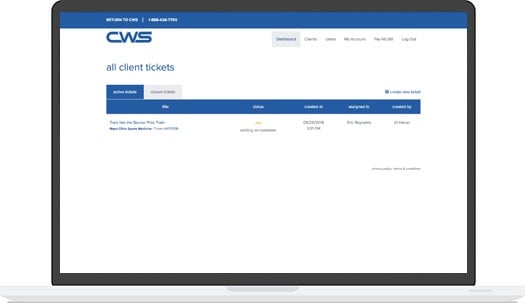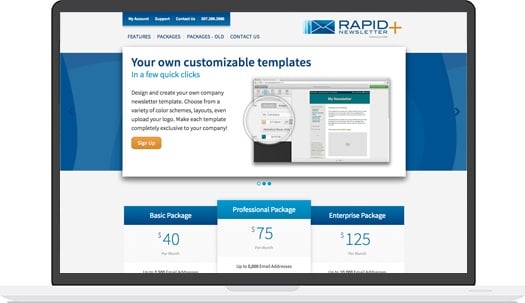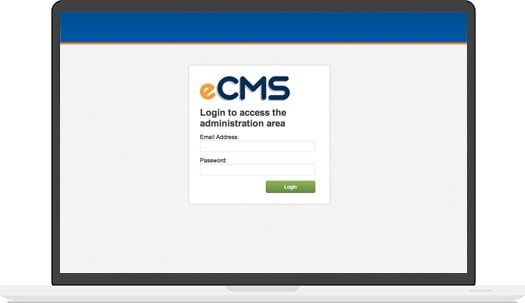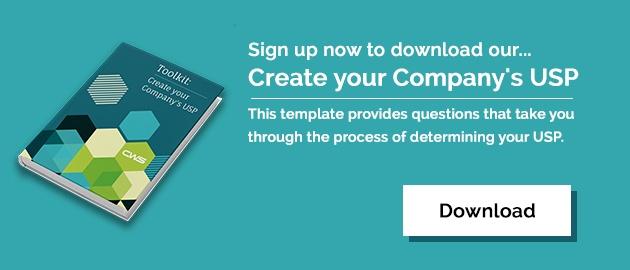Your USP stands for your unique selling point or your unique selling proposition. It's what makes you different and separates you from your competition.
Very few businesses are one-of-a-kind. Unless you can pinpoint what makes your company unique in a world of homogeneous competitors, you cannot successfully target your sales efforts.
In this article, you will learn how to create a unique selling proposition.
Download your free copy of Create Your Company's USP.
Step 1: Brainstorming Ideas
Creating a unique selling proposition requires the efforts of your team. Choose from every department, if possible, such as sales, marketing, customer support, IT, human resources, finance, etc. Bring them together for a brainstorming session and start writing down ideas.
Begin by asking your team what they think separates your company from your competitors. Don’t be surprised if at first you only get vague ideas, such as:
- we provide great service
- our product is better
- we have more experience
That’s okay. In this first step, you’re just gathering ideas. Remember the rule of brainstorming: Write down everything and withhold all judgement.
Step 2: Refining Your Ideas
Now that you have a list of broad ideas, it’s time to dig deeper. This is where the magic happens. Ask for examples and stories. Listen to what everyone says, and write down the main points.
Ask questions such as:
- What do you mean by…
- In what way is it…
For example, you could ask:
- What do you mean by great service?
- Tell me a story (example) of how we delivered great service
- In what way is our product better?
Adding a guarantee can often help make your selling point unique.
Step 3: Choosing Your USP
The last step is to choose which of your refined ideas will become your company’s USP. Your USP should be:
- Unique to your company
- Important to your customers
- Able to stand the test of time
Choose a USP that helps you sell more of what you offer. Forget about clever or cute, your USP needs to be practical. It needs to be easily understood by your customer.
Your USP also needs to last for the long term. Don’t include language that might become outdated in a year or two.
Step 4: Using Your USP
Your USP is a tool. Your sales and marketing teams will use your USP every day. You want your USP to be ubiquitous.
Be sure to include your USP in the following places:
- Letterhead, business cards, and other printed materials
- Email signatures
- Website (prominent, not tucked into the footer in small print)
- Paid advertising
Your USP should be everywhere.
Examples of USPs
Sometimes the best way to learn is by example. Here are some famous USPs:
- “Delivered to your door in 30 minutes or less—or it's free.” Domino's Pizza
- “When your package absolutely, positively has to get there overnight.” Fedex
- “We’re number two. We try harder.” Avis

.jpg?t=1533315998368) How-To Articles
How-To Articles Support Portal
Support Portal Webmail
Webmail Rapid Newsletter+
Rapid Newsletter+ eCMS
eCMS


 Our content team is made up of thought leaders, strategists, and content creators who have more than 70 years of combined experience. With a wide variety of backgrounds as entrepreneurs, marketing gurus, healthcare associates, as well as plenty of experience in other industries, we help grow businesses with our relevant, trusted, and helpful resources.
Our content team is made up of thought leaders, strategists, and content creators who have more than 70 years of combined experience. With a wide variety of backgrounds as entrepreneurs, marketing gurus, healthcare associates, as well as plenty of experience in other industries, we help grow businesses with our relevant, trusted, and helpful resources.
